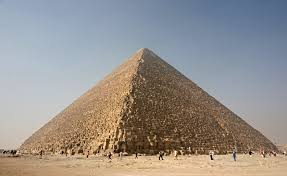What are mummies?« Back to Questions List
|
Mummy is an Arabic word which means a body preserved by wax or tar. The custom of preserving the bodies of the dead was practiced by the ancient Egyptians. Some authorities restrict the use of the term to bodies deliberately embalmed with chemicals. But incidental exposure to chemicals, extreme cold (ice mummies), very low humidity etc also result in mummies. Mummies of humans and other animals have been found all around the world. Over one million animal mummies have been found in Egypt, many of which are cats. The oldest known naturally mummified human corpse is a severed head dated as 6,000 years old, found in 1936 at the site named Inca Cueva No. 4 in South America.The oldest-known deliberate mummy is a child, one of the Chinchorro mummies found in the Camarones Valley, Chile, and dates from around 5050 BC.Mummies were much sought-after by museums worldwide in the 19th and early 20th centuries. Notably fine examples are exhibited at the Egyptian Museum in Cairo, at the Ägyptisches Museum in Berlin, and at the British Museum in London. The normal procedure involved was application of salt which took out the moisture of the body. When the body had been dried out, it was bathed, rubbed with resin from pine trees, treated with wax and wrapped in hundreds of metres of linen. The Greek historian Herodotus said he witnessed the practice on a trip to Egypt in 484 B.C. "In the best treatment," he wrote, "first they draw out the brains through the nostrils with an iron hook, and what the hook cannot reach is dissolved with drugs..Next they make an incision in the flank with a sharp obsidian blade through which they can extract all internal organs. Then they clean out the body cavity, rinsing it first with palm wine and again with a solution of pounded spices. Then it is filled with pure crushed myrrh, cassia and all other aromatic substances, except frankincense...The incision is sewn up and then the body is placed in natron.” Natron is a naturally-occurring mixture of baking soda and salt that absorbs moisture and fat. The body was covered in natron several days to prevent the body from decaying. The natron drew water out of the body and preserves it as if it were dried fish. Without water bacteria can not cause decay. Sometimes the tree resin of conifers was used. It too sucks out water. Along with the dead bodies, the articles of daily life were also kept inside the pyramids. Depending upon the social status pyramids took various forms. Pyramid of Khufu A pyramid is a structure whose shape is roughly that of a pyramid in the geometric sense; that is, its outer surfaces are triangular and converge to a single point at the top. The base of a pyramid can be trilateral, quadrilateral, or any polygon shape, meaning that a pyramid has at least three outer triangular surfaces (at least four faces including the base). The Great Pyramid of Giza (also known as the Pyramid of Khufu or the Pyramid of Cheops) is the oldest and largest of the three pyramids in the Giza Necropolis bordering what is now El Giza, Egypt. It is the oldest of the Seven Wonders of the Ancient World, and the only one to remain largely intact. It is believed that the pyramid was built as a tomb for fourth dynasty Egyptian Pharaoh Khufu (Cheops in Greek) over a 10 to 20-year period concluding around 2560 BCE. Initially at 146.5 metres (481 feet), the Great Pyramid was the tallest man-made structure in the world for over 3,800 years. |


